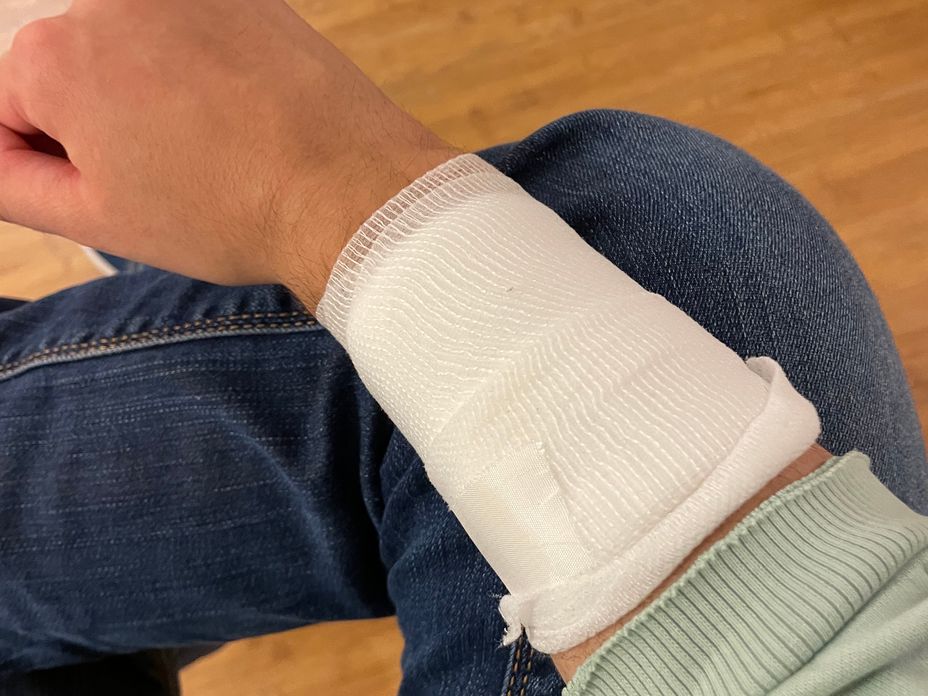I'm so tired. Beyond exhausted.
There's just too much, I don't really feel like fighting for much. Let's be real, global politics are just overwhelming at this point, every day a new battery of bad news, even with small victories like recently in my country, I feel we're still losing the battle.
And that's not just what is affecting me but mostly it's thanks to that... I see friends suffering because of it and I feel for them. I can't expect a future anymore... I remember as a teen almost getting into adulthood I was like "I'm sure adult life sucks", but I wasn't expecting it to suck so much! I am only being able to live because I got some family support, because the government aid is too low for a person to live with. But part of this family support comes with a cost, comes with power over me and that means abusive behaviour that I just have to accept quietly with my head low.
Being disabled makes everything even worse, I can't get a job due to prejudice, I work my butt off to be qualified for stuff, but this work never seems enough. Because in the eyes of others I'm useless, I'm a burden, I'm an extra cost to consider. So I'm going through university just to get a piece of paper that says I am able to do computer stuff when many programmers get the job because they learn by themselves. And at the university I don't actively learn to code, I learn by myself, but I don't have the right for credibility it seems. I'm so tired.
Recently my biggest source of drainage is thinking how I'm living in this messed world and I'm just beginning my youth to a very clear possible war scenery in the world. It's not only depressing, but at the same time it gives me low expectations on getting my degree and starting to stabilise my life. I feel stuck.
Not only that but there's all this pressure for learning to do stuff, while taking care of my home, and then getting second degree obese and now needing to lose weight. I wasn't very worried because of spite, I don't like fatphobic comments so everty time someone commented on my weight I would make less and less effort for losing some. But now I'm already hating myself, I'm already with thoughts of stopping eating for good... But at the same time I'm so tired, I have so much in mind that I just want to starve myself until I lose the hunger sensibility, I want to eat, and not compulsively, but I just don't want to feel hungry. I don't feel the energy to do physical activities even more now that here's going to summer time and I suffer a lot with allergies caused by excessive heat... So I just don't know how to make a 180° and get a hold on things.
Adult life suck, bills suck, family is abusive, social relationships are depleated because now we're all cranky adults that have no time, hunger also sucks, and global politics don't give a break, I'm too much overwhelmed and it's not only me, but a lot of people are considering that a new war is no matter of if, but when. There's so much more affecting me right now, but I'm too tired to go through my line of thought. I honestly want a escape route from my life, I want to scream, I feel like hurting myself to relieve my emotions, I feel like giving up, there's no antidepressant in the world that will help with it, because it's not a matter of "your body is not synthesizing your hormones correctly", sure there's that, but come on! The outside is so bad, so terrible, so overwhelming that what can an antidepressant do? Also therapy isn't helping much either. Things are so out of control that telling my psychologist my worries won't solve anything, because we can't just make the world leaders act like adults should.
And really, the "stop worrying with stuff you have no control over" speech isn't good in this case, because yes I don't have control over it, but ignoring is even worse, because it will mean I am putting myself to the mercy of the possible worst future foreseeable. I can't not worry about if tomorrow I'll have to fight for a meal, or not worry about if there will be even a tomorrow!
I am in a country that thankfully war related laws are very strict and prevents us from going headfirst on them, but internal politics are also not so well. We have a small victory here and there and then there are people that only worry for their own pockets just destroying everything again.
I'm just tired!
I just want to rest for a single day without worrying about anything, or anyone. I just want some rest.




